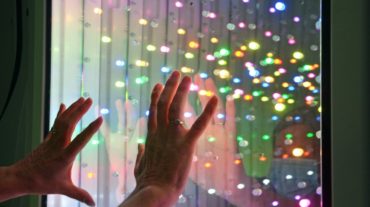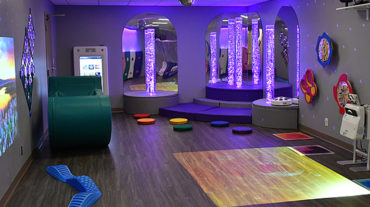Snoezelen for Brain Injury
Acquired brain injury, and other neurological conditions, can be devastating to the individual concerned and their families, friends and loved ones, particularly if it is the result of a sudden event. Multi-Sensory Environments (MSEs), although perhaps not initially a very obvious choice for clinical interventions, can be designed to include equipment that can help a person on their journey of physical and/or cognitive rehabilitation.
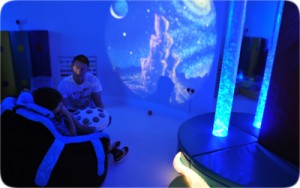 For those requiring engagement purely at a sensory level, the equipment can be used in a variety of ways purposefully to target tactile, visual, olfactory, or audible senses. The space may also be used to calm and soothe and provide a personalized environment where someone feels safe and comfortable to share confidences, or used as a place to learn new communication techniques.
For those requiring engagement purely at a sensory level, the equipment can be used in a variety of ways purposefully to target tactile, visual, olfactory, or audible senses. The space may also be used to calm and soothe and provide a personalized environment where someone feels safe and comfortable to share confidences, or used as a place to learn new communication techniques.
Fundamentally, the room needs to be designed for inclusivity, ensuring that everyone regardless of mobility need, can access and carry out various activities, whether using walking frames, wheelchairs, or requiring transfer via mobile or ceiling track hoists. Purposeful design and planning is required to serve the needs of this client group effectively – for example, enabling safe transfers which may require inclusion of platforms for staff to use mobile hoists, ensuring clear paths and planning seating areas in conjunction with ceiling track hoists, and carefully considering the width, height and depth of seating areas so that clients can be transferred and positioned near equipment that they can see, touch and interact with.
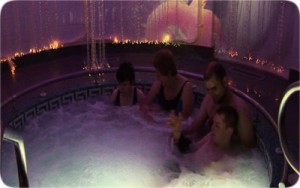 Inclusion of large flat plinths to enable therapists to carry out various stretching exercises or equipment that enables physiotherapists to encourage gross motor activities to strengthen muscles using activities that are cause and effect all may be considered. Cleaning and maintenance is also a key factor to consider in clinical service areas and therefore removable cushioning to enable deep cleaning or using LED tubes instead of the traditional water-filled tubes, and signing up to an annual service to repair and maintain the equipment may reduce the need for maintenance and help satisfy infection control concerns.
Inclusion of large flat plinths to enable therapists to carry out various stretching exercises or equipment that enables physiotherapists to encourage gross motor activities to strengthen muscles using activities that are cause and effect all may be considered. Cleaning and maintenance is also a key factor to consider in clinical service areas and therefore removable cushioning to enable deep cleaning or using LED tubes instead of the traditional water-filled tubes, and signing up to an annual service to repair and maintain the equipment may reduce the need for maintenance and help satisfy infection control concerns.
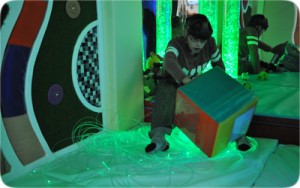 For this client group, a Multi-Sensory Environment is particularly effective when it has been carefully planned and equipped with a range of carefully selected equipment that can be used by various professionals to target specific cognitive needs such as problem solving, decision making, hand-eye coordination, concentration, memory, attention, object recognition and word-finding. This ideally will include provision of a storage area (lockable) to keep equipment accessible and minimize risk to service users.
For this client group, a Multi-Sensory Environment is particularly effective when it has been carefully planned and equipped with a range of carefully selected equipment that can be used by various professionals to target specific cognitive needs such as problem solving, decision making, hand-eye coordination, concentration, memory, attention, object recognition and word-finding. This ideally will include provision of a storage area (lockable) to keep equipment accessible and minimize risk to service users.
If the therapeutic goal is to improve functionality levels, one might use a range of interactive items or tactile games or items that prompt controlled movement to develop increased muscle strength, grip, dexterity, or range of movement. Portable equipment is extremely valuable as smaller items can be used on a 1:1 basis, taken to a bedside, used on an over the bed table, or perhaps to facilitate group activity.











